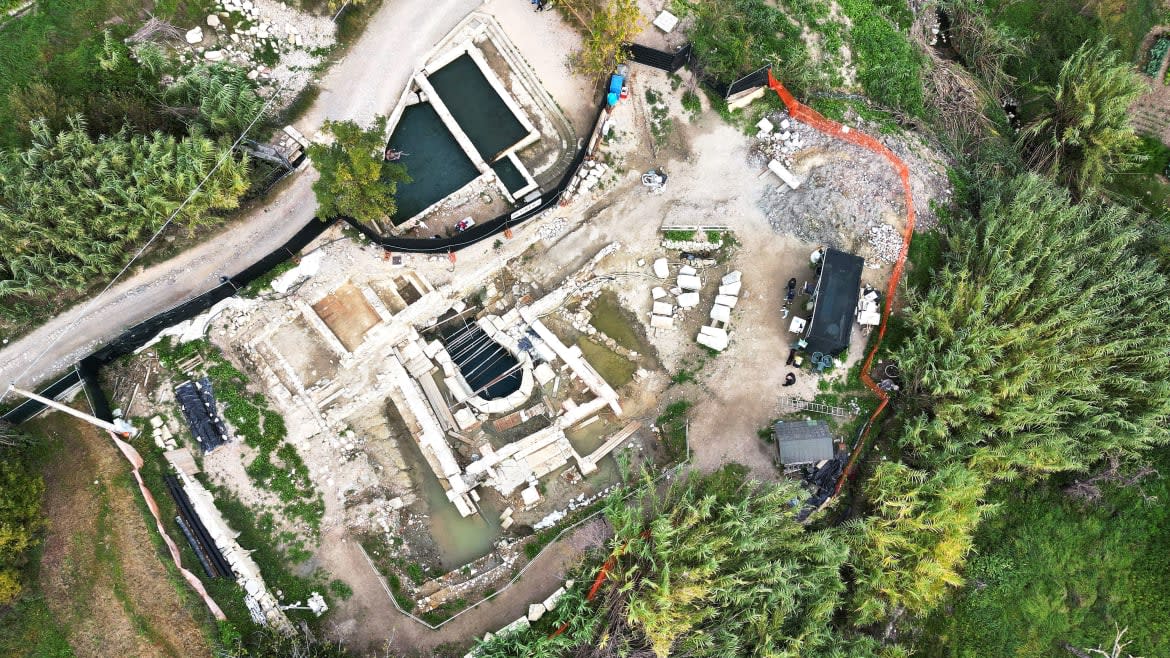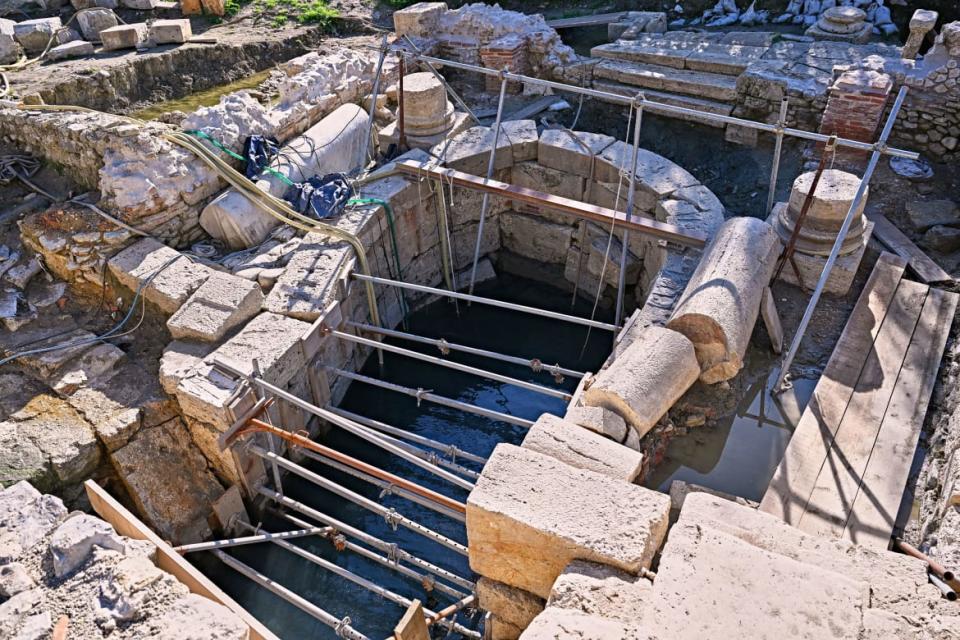Do These Just-Discovered Bronzes Really ‘Rewrite History’?

Mud is a funny kind of dirt. If it was splattered on your outfit you would look around for a change of clothes, but you also might pay good money to have an aesthetician paint it on your face. As archaeologists excavating an ancient sanctuary in Tuscany recently discovered, the anti-aging properties of mud aren’t limited only to our faces. Italy’s Ministry of Culture announced last Tuesday that more than two dozen 2,300-year-old Etruscan bronze figures have been unearthed at San Casciano die Bagni. Experts are calling it the most important discovery of its kind in half a century.
Excavations at the site, led by archaeologist Dr. Jacopo Tabolli, a professor at the University for Foreigners in Siena, have been ongoing since 2019. Last month Tabolli and his team unearthed the largest concentrated collection of bronze statues ever found in Italy. The bronzes were in impeccable condition because mud works as one of nature’s preservatives: in the past it has suspended body parts, fossils, and even a whole village in its embrace. Had the bronzes been open to the elements their inscriptions would have been eroded long ago.
Among the bronzes were depictions of deities including Apollo, Fortuna, and Hygeia (the last was the goddess of health). Many of the statues included Etruscan and Latin inscriptions that mentioned the names of affluent families. Alongside these, scientists discovered bronze carvings of body parts and organs. Similar sculptures, known as votives, have been found at healing shrines and temples all over the ancient Mediterranean. Their presence here suggests that the thermal spring around which the spa was built functioned as a healing center that attracted medical tourists. In addition to all of the sculptures and inscriptions, archaeologists found 5,000 gold, silver, and bronze coins.
The site itself is Etruscan and most of the items date to 300-200 B.C., a period of regional unrest and tensions. The Etruscans are known to most people as the northern neighbors of the ancient Romans (the Latins). The civilization reached its zenith around 750 B.C., when a confederation made up of Etruria, the Po Valley, the Alps, and Campania, in southern Italy worked in mutual cooperation. Trade with the Celts in modern France and Greeks of the Peloponnese spread Etruscan culture into northern Europe and around the Mediterranean. They dominated Italian civilization for roughly 500 years before the ascent of the Roman Republic. There’s a healthy academic debate about whether the Etruscans should be seen as the founders of Rome.

Thermal bath of the archaeological site where over 2000-years-old bronze statues are discovered at the sanctuary of San Casciano dei Bagni, in Tuscany.
The discoveries at the thermal springs provide information about cultural exchange during an important period of military, political, and social conflict. The Romans and Etruscans were engaged in a series of wars that lasted hundreds of years. The conquest of Etruria is generally agreed to have been completed by 264 B.C., with the last Etruscan cities formally being absorbed into Rome by 27 B.C.. This is generally thought of as a tense period of social and political upheaval, but in the space inside the springs Romans and Etruscans happily cohabitated. As Tabolli puts it, “Even in historical epochs in which the most awful conflicts were raging outside, inside these pools and on these altars the two worlds, the Etruscan and Roman ones, appear to have coexisted without problems.”
Since the San Casciano bronzes were announced there has been a slew of articles touting this as a discovery that will “rewrite” or even “change history.” This rather bold statement has provoked some confusion about what, exactly, is being changed by this find. It’s a bit early to say, but there are two aspects of the discovery that make it significant. The first is the context of the discovery. Christians sealed the pools of the ancient (pagan) spa in the fifth century with heavy stone pillars, but they left the statues inside. The mud protected the bronzes from decay and the sealing of the space means that this is the only trove of ancient Italian statues the origins of which we can fully reconstruct. In contrast to most ancient sculptures, we know that the bronzes stood together in this exact space. We can develop theories about the artistic program and their significance. Moreover, we can read the names of those who donated and dedicated the bronzes and that allows us to build a more nuanced picture of the social interactions between Romans and Etruscans in this transitory period.
The second reason has to do with the deities. On Twitter, philologist Dr. Ignasi-Xavier Adiego a professor at the University of Barcelona who was not involved in the excavations, noted that the find may offer evidence of a previously unknown Etruscan deity. The Etruscan language is still poorly understood, but Adiego noticed that the name “Havenš” appears on at least two statues. He observed that this particular form of the name is reminiscent of other Etruscan names found in votive inscriptions. Adiego told The Daily Beast that “Havenš could be the Etruscan equivalence of [Apollo, Fortuna or Hygeia] or refer to a different one.” The name, he hypothesized might be related to the Latin word family “favere” meaning “to be favorable,” which would be an appropriate name for a deity related to healing. Given the philological evidence, he added, it’s possible that the deity was a goddess. Adiego cautioned that we should wait for the official study to be undertaken, but the discovery of a new deity is an important moment for Etruscan studies.
Do the bronzes rewrite history, as Tabolli said? Well, it depends on your interests. For those who study the ancient Etruscans and Romans, absolutely. There’s no doubt that this is the most important discovery of bronzes since the Riaci bronzes were unearthed in 1972. It will help flesh out our understanding of cultural exchange between Etruscans and Romans in the Italian peninsula in a particularly fraught time. Italian culture minister, Gennaro Sangiuliano, is correct when he described this as an “exceptional discovery.”
If by “rewrite history” you were expecting to find out that, say, the Etruscans never existed then you might be disappointed.
Get the Daily Beast's biggest scoops and scandals delivered right to your inbox. Sign up now.
Stay informed and gain unlimited access to the Daily Beast's unmatched reporting. Subscribe now.

